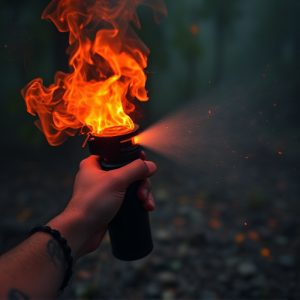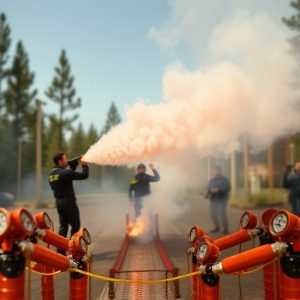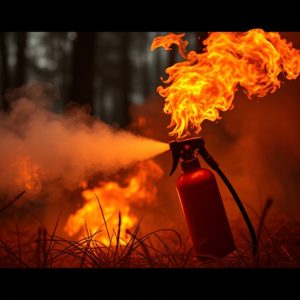Wildfire Pepper Spray: Enhancing Law Enforcement Surveillance and Safety
Wildfire pepper spray, a specialized tool, combines potent capsaicin and fire-retardant chemicals to…….
Wildfire pepper spray, a specialized tool, combines potent capsaicin and fire-retardant chemicals to combat aggressive wildfires, causing temporary blindness, breathing difficulties, and reducing flame spread. It gives emergency responders crucial time for assessment and tactical organization. In law enforcement, it aids in controlling high-risk situations, enhancing surveillance operations, and disrupting criminal activities. Effective deployment requires thorough training, strategic planning, drills, simulations, and decontamination procedures to balance its power with responsible use.
“In the realm of law enforcement, especially with growing concerns over wildland fires, understanding the potential of wildfire pepper spray is paramount. This innovative tool combines the power of pepper spray with fire-resistant properties, offering a unique solution for surveillance and safety during critical incidents.
The article explores the composition and effectiveness of this specialized spray, its integral role in enhancing law enforcement capabilities, and the essential training required to implement it successfully for optimal wildfire surveillance.”
Understanding Wildfire Pepper Spray: Its Composition and Effectiveness
Wildfire pepper spray is a specialized law enforcement tool designed for high-risk situations, particularly during wildfire surveillance and control operations. Unlike traditional pepper spray, which primarily targets the eyes and respiratory system, wildfire pepper spray is formulated to create an effective barrier against aggressive fires. Its composition includes potent capsaicin, the same compound that gives chili peppers their heat, combined with a range of fire-retardant chemicals. This unique blend enables it to not only cause temporary blindness and breathing difficulties but also suppress flame spread and reduce fuel load.
The effectiveness of wildfire pepper spray lies in its ability to provide quick protection against fast-moving wildfires. When deployed, the spray creates a cloud of irritants that can temporarily disable or slow down fire behavior, giving emergency responders and firefighters crucial time to assess the situation, organize tactics, and take necessary measures to contain the fire. With proper training and usage guidelines, this innovative tool adds a powerful layer of protection in the arsenal of law enforcement agencies responsible for wildfire surveillance and management.
The Role of Pepper Spray in Law Enforcement: Enhancing Safety and Surveillance
In the realm of law enforcement, wildfire pepper spray has emerged as a powerful tool, enhancing both safety and surveillance capabilities. This non-lethal agent plays a pivotal role in managing high-risk situations, providing officers with an effective means to control and de-escalate potential threats. By temporarily blinding and disorienting subjects, pepper spray allows law enforcement to gain the upper hand during confrontations, ensuring the safety of both the officers and the public.
Moreover, wildfire pepper spray significantly improves surveillance operations. Its quick-acting nature enables tactical units to respond swiftly to dynamic scenarios, making it invaluable in high-stakes pursuits and crowd control. The strategic use of this spray can disrupt criminal activities, providing crucial time for authorities to gather intelligence and secure the scene. With its ability to temporarily disable individuals without causing permanent harm, pepper spray is a game-changer in modern law enforcement tactics.
Implementation and Training: Optimizing the Use of Wildfire Pepper Spray for Effective Surveillance
Implementing wildfire pepper spray into surveillance tactics requires careful training and strategy. Law enforcement agencies should provide comprehensive training programs to ensure officers are proficient in its use, understanding both its capabilities and limitations. This includes scenarios that mimic real-world situations, focusing on swift deployment for effective surveillance.
Regular drills and simulations can optimize the timing and technique of spray application, enabling officers to control and contain areas of interest while gathering intelligence. Proper training also emphasizes the importance of decontamination procedures post-use, ensuring the safety of both officers and any potential witnesses or bystanders. Effective implementation of wildfire pepper spray requires a balance between its potent capabilities and responsible, strategic deployment for optimal surveillance outcomes.


